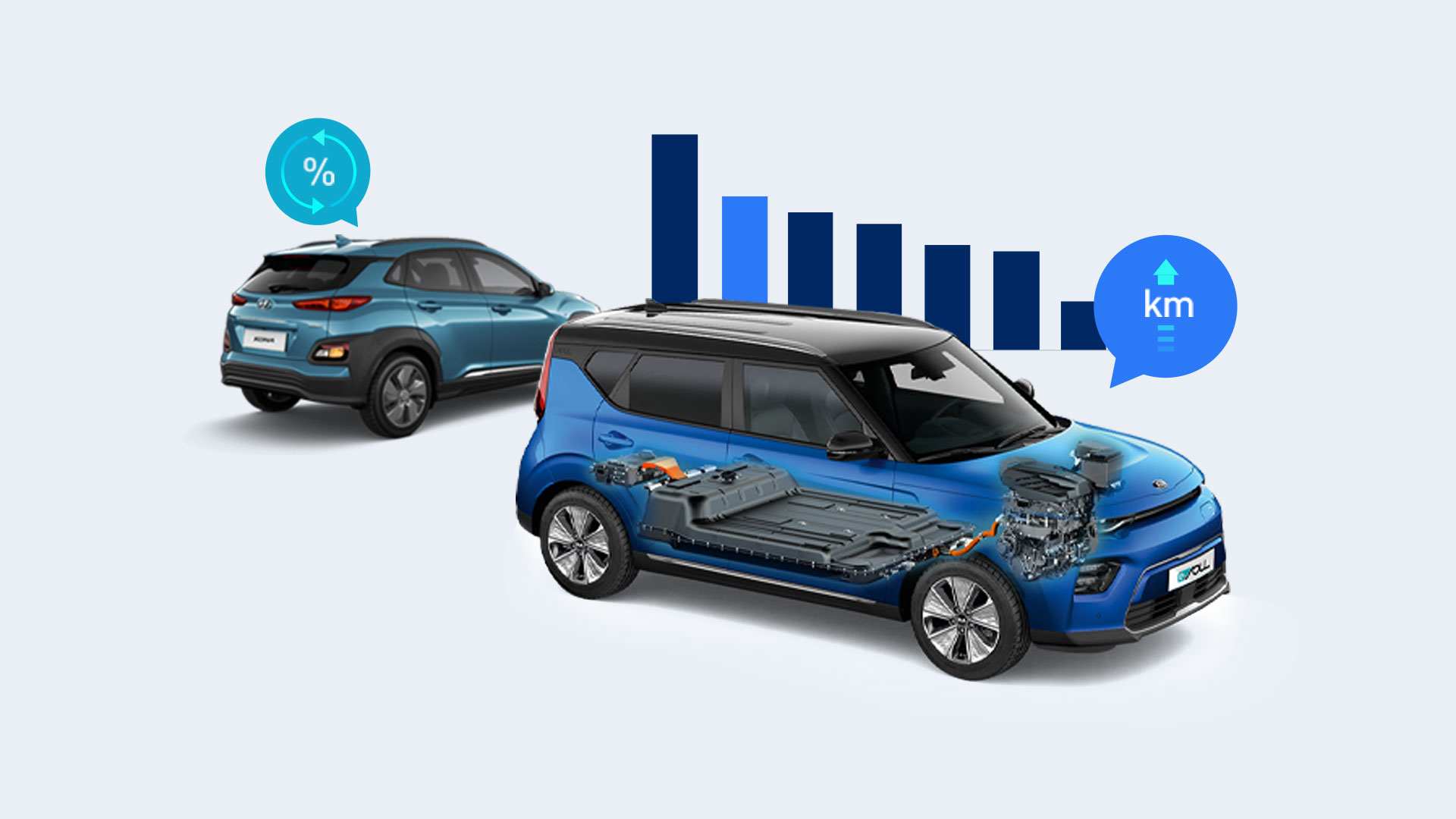
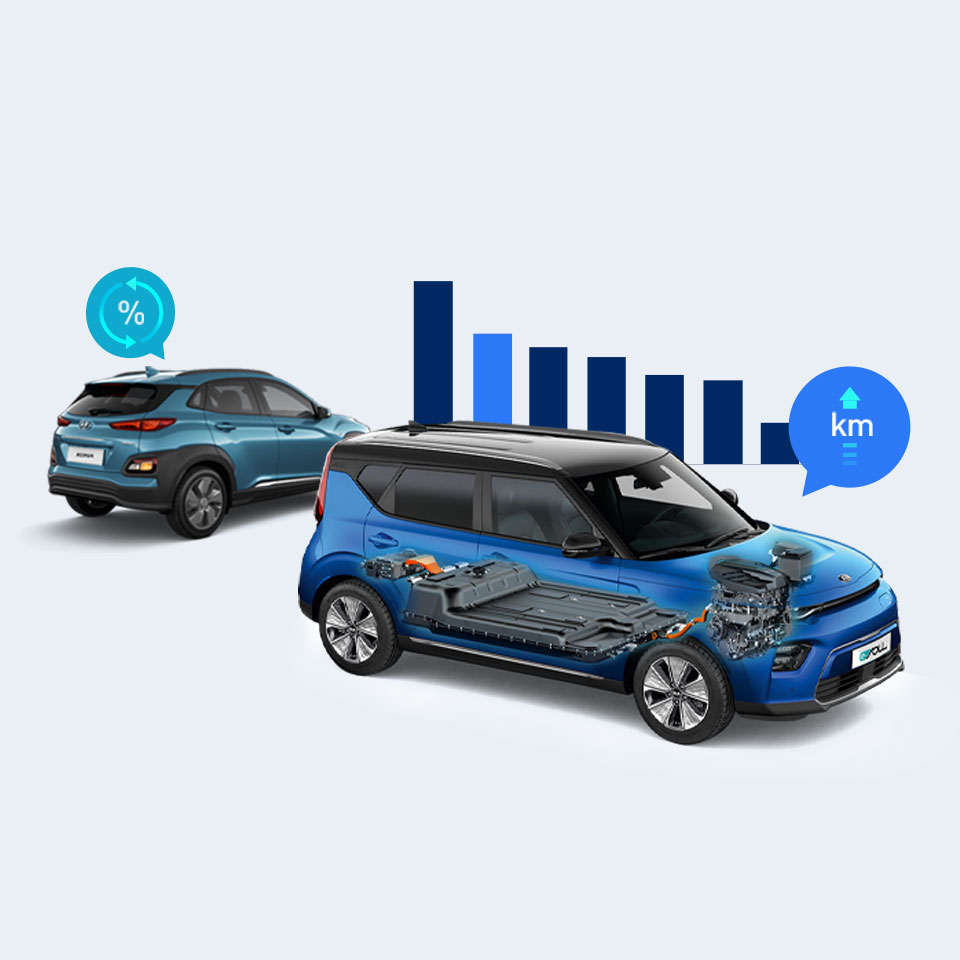


Recently, the Kia Soul EV was selected as ‘World Urban Car’ by the 2020 World Car Awards, which made it become the first domestic model to receive the honor. The Hyundai Kona Electric, likewise, has ranked among the Ward’s Auto 10 Best Engines & Propulsion Systems, marking the model’s second consecutive year in the rankings. The honors show that Hyundai Motor Company and Kia Motors Corporation’s EVs are not merely viable but also successful globally. This success may stem from a variety of factors―design, convenience features, performance, price―but one major draw for global consumers in choosing Hyundai and Kia EVs has been their excellent range.
All-Electric Range(AER), which is the total distance traveled by an EV on a single charge, is considered one of the most important indicators of performance in electric vehicles because it has a large impact on driver convenience. Longer range not only reduces the pesky search for charging stations but also allows longer-distance travel without causing unnecessary anxiety. It is unsurprising, then, that consumers consider AER as the most important factor in choosing their EV model: according to a survey of prospective EV buyers by EV Trend Korea last year, 45% of the respondents picked range as the most important factor influencing their purchasing decisions.
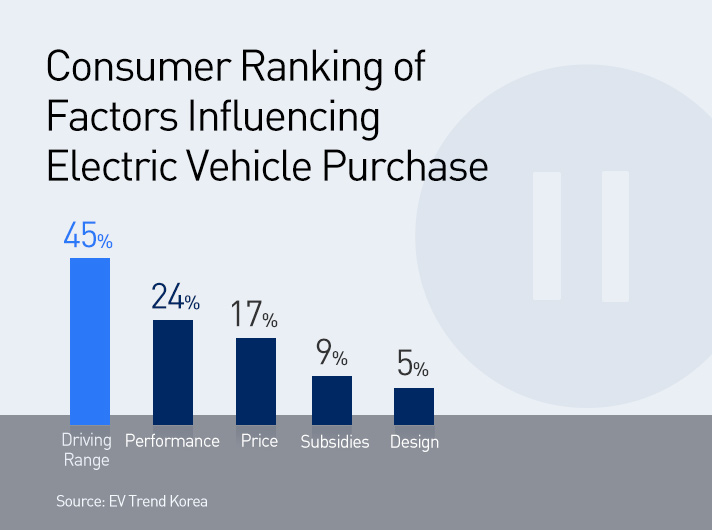
Hyundai and Kia has been responding actively to the demands of the rapidly-expanding global EV market. Its consistent R&D efforts, for example, have made it possible for the brand’s EVs to boast industry-leading efficiency marks. The Ioniq EV was officially certified by the U.S. Environmental Protection Agency as the most energy-efficient EV of 2018; the Soul EV, Nero EV, and Kona Electric offer the best range marks in their respective segments.
How could Hyundai and Kia EVs come to possess such high efficiency levels? Is the answer simply in a larger-capacity battery? In this article, we review the core technologies responsible for this efficiency: evolutions in e-Powertrains and batteries and the heat pump system that recycles waste heat to reduce the range loss in cold weather.
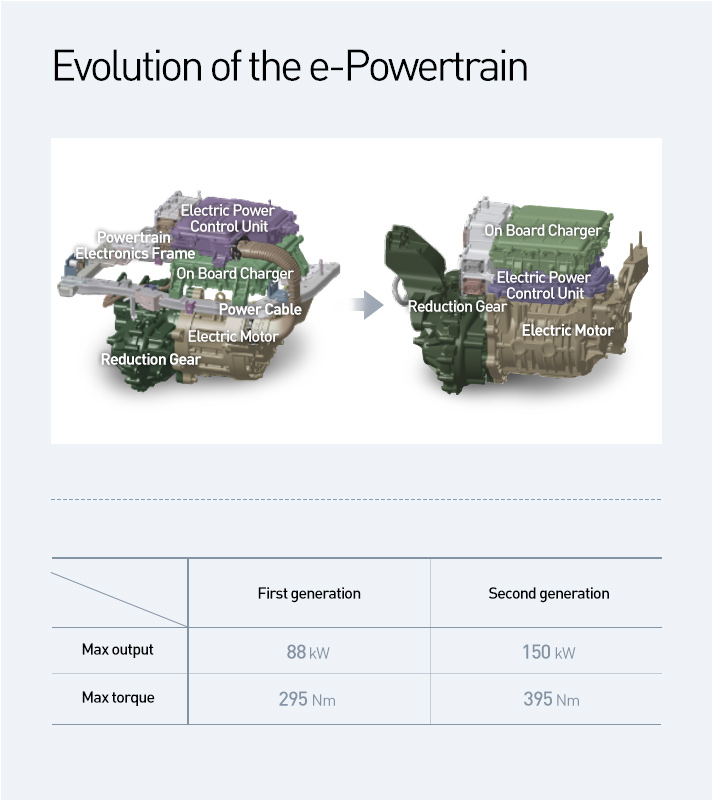
A variety of technological innovations is responsible for maximizing the range of Hyundai and Kia EVs. First is the evolution in the e-Powertrain, which converts electrical energy to torque and delivers it to the wheels to move the vehicle. Arguably the most important part of the modern car, the powertrain in an internal combustion engine(ICE) vehicle is composed of the engine and the transmission. For EVs, the parts that make up the powertrain are slightly different. There is the electric motor, which converts electrical energy to kinetic energy; there is the Electric Power Control Unit(EPCU), which converts and delivers the electricity in the battery to the motor; there is the On-Board Charger(OBC), which is a controlling device that allows the slow-charge of a high voltage battery from the AC grid; finally, there is the reducer, which adjusts the number of revolutions by the motor and conveys those revolutions to the drive shaft.
The e-Powertrains for Hyundai and Kia’s first-gen EVs had all these parts separated from one another. But starting from the second generation models, like the Soul EV or the Kona Electric, the e-Powertrains come with the integrated structure that reduces both weight and volume. Less weight means less energy consumption over the same distance, so the second-generation vehicles’ range could increase appreciably as a result.
With the structural change also came the improvements of individual parts. The motor was upgraded to be both high-efficiency and high-power, and the OBC and the EPCU were made more compact while simultaneously increasing their power output and density. The second-gen EVs accordingly saw their motor output increase to 150 kW, nearly double the 88kW of the first generation’s.
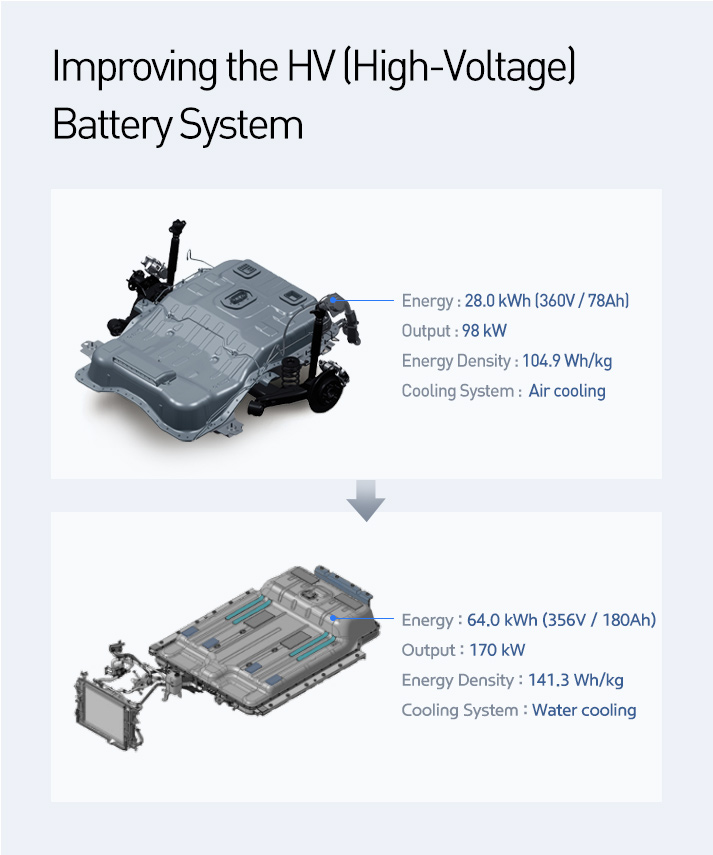
Another innovation for the efficiency increase was the optimization of the high-voltage battery system. EV range is directly proportional to battery capacity―a dramatic increase in range essentially requires the expansion of the battery. But as the space available for the battery in the vehicle is limited, the engineers had to find a way to maximize the battery capacity while minimizing the impact on the vehicle’s movement and preserving the space for passengers and cargo.
One such way came in changing the cooling system. Engineers realized that liquid cooling could have the batteries placed closer to each other than they could be in the air cooling system, which structurally requires a separate air tunnel that can be omitted in the liquid cooling structure. This realization led Hyundai and Kia’s second-generation EVs to be mounted with liquid-cooled batteries.
And to those batteries were applied new battery cells, which show a 35% improvement in energy density over the previous cells. While a higher battery capacity can be achieved simply by increasing the physical size of the battery, the resulting weight increase poses an additional burden for the motor and offsets the energy gain from the capacity increase. Higher energy density can improve this tradeoff by reducing the extent of size increase required to achieve a certain level of energy increase; simply put, denser cells can achieve the same increase in battery capacity with less added weight.
So whereas the first-gen Soul EV was equipped with a 30kWh battery and had the range of 180 km, the second-gen model is equipped with a 64kWh battery and boasts the max range of 386 km(measured per domestic Korean standards). This substantial increase in range―more than doubling on the previous figure―was made possible by innovating the battery system structure and improving the performance of the battery cells.
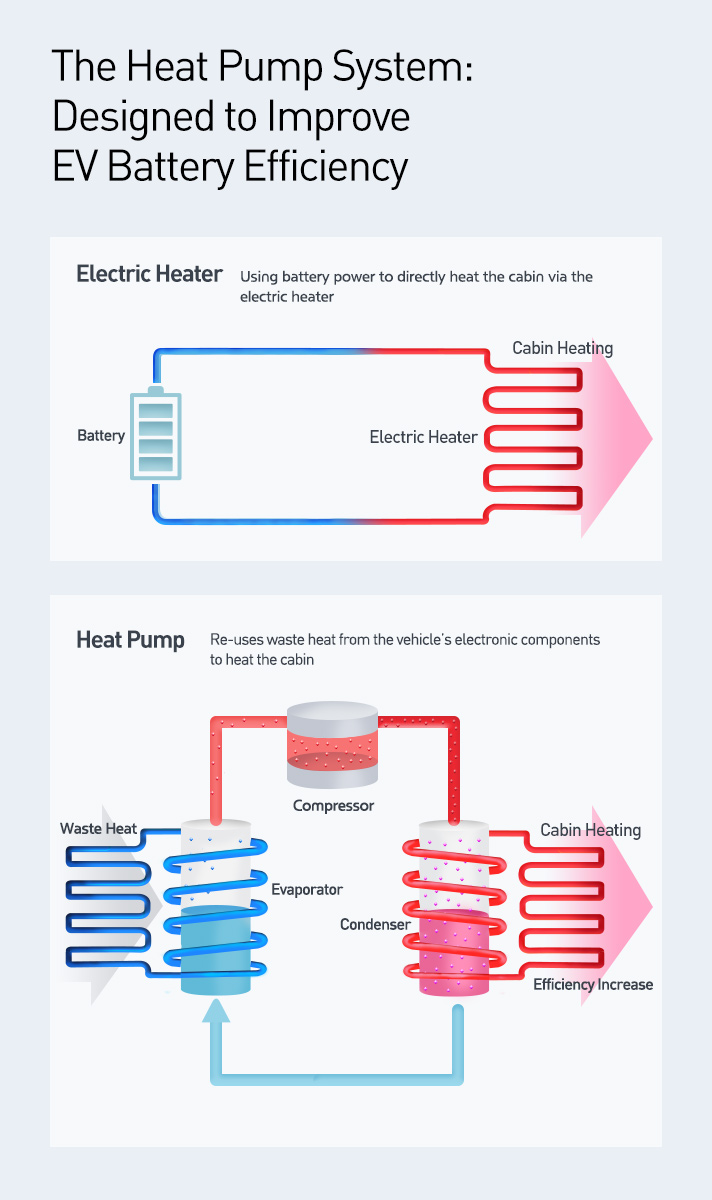
Beyond the improvements in the e-Powertrain and the battery, which affects the EVs’ everyday range, Hyundai and Kia has also developed technologies that avail range increases in certain driving conditions. One example is the heat pump system, which was first introduced on the first-generation Kia Soul EV in 2014 and has been developed to perfection ever since.
The heat pump system minimizes energy loss by reusing the waste heat from the vehicle’s electronic components to heat the cabin. As EVs are powered not by the engine but by the motor, they cannot use the waste heat from the engine for heating as ICE vehicles do. Therefore, EVs have to run an electric heater with the electricity in the battery―the very electricity that could have been used for increasing the driving range. This is why most EVs show a substantially reduced driving range for the winter months that require heating.

The heat pump system is Hyundai and Kia’s response to this drawback; however, there are several challenges that need addressing before this idea becomes practicable. First, the waste heat from the electronic components is not hot enough to heat the cabin, so this ‘source heat’ needs to be further heated somehow.
The heat pump system achieves this task by following the steps below. After absorbing the heat from the outside air and the waste heat recovered from the electronic components, the system (1) vaporizes the liquid coolant and (2) uses the compressor to compress the vaporized coolant. The resulting high-pressure gas is then (3) delivered to the condenser, which converts the vaporized coolant to a liquid state again. This conversion process (4) generates powerful heat energy, which is then used for cabin heating.
For liquids to become vapors, they must absorb heat, and for vapors to become liquids, they must release heat; the heat pump system takes advantage of this natural law to make the EVs more efficient. The mechanism should sound familiar―most modern air conditioners work this way to cool the indoors while releasing the resulting heat through the outdoor unit. Household dryers and A/C and heater combos follow the same mechanism as well. Now, it should be admitted that the system’s use of the compressor and condenser requires using electricity. But this loss is minor in light of the significant amount of total energy savings the system produces over the old heating method.
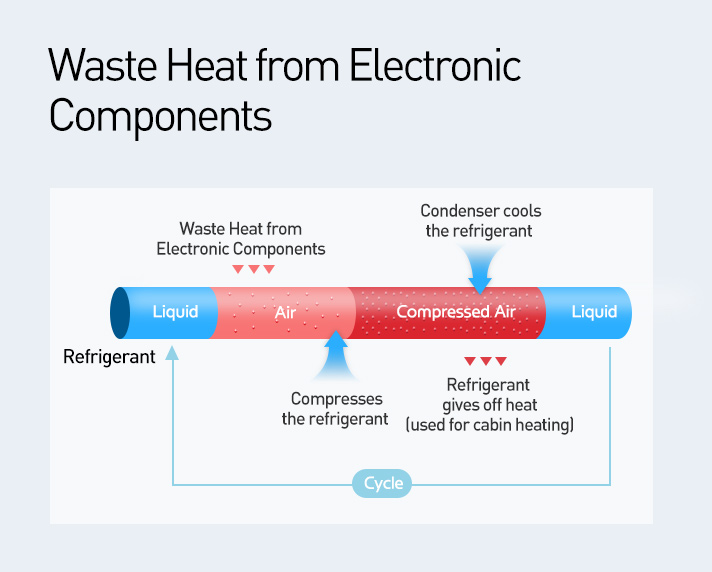
Since introducing the heat pump system on the Soul EV in 2014―the world’s first heating system of its kind―Hyundai and Kia has consistently updated it with strong R&D efforts. For example, the new high-efficiency heat pump mounted on the Kona Electric shows particularly excellent performance by expanding the range of recovered waste heat. The old heat pumps used the heat from the external air and from the PE module parts like the motor, OBC, and EPCU; the new pump, on the other hand, uses the heat from the external air and the PE module in addition to heat from the battery and the slow charger. The heat pump system’s excellence was recently praised by Tesla CEO Elon Musk, who, in discussing his choice to apply the system on the brand’s Model Y, dubbed it as an example of the ‘best engineering’. The heat pump system can now be found in all Hyundai and Kia EV lines, including the Hyundai Ioniq Electric and Kona Electric, as well as the Kia Nero EV.
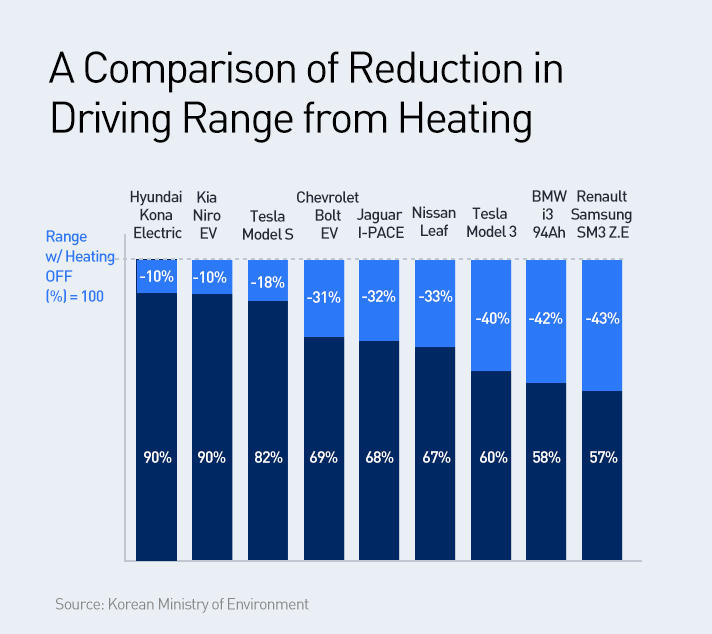
The striking efficiency of the heat pump system is immediately visible in the Ministry of Environment’s comparative review of major EVs. The Ministry stipulates that a EV’s driving range in low temperatures (measured at -7℃ with the heating on) should exceed 60% of the normal range in order to qualify for the government’s consumer EV subsidy. The Kona Electric and the Nero EV’s low-temperature range is 90% of the normal range, easily beating the previous record held by the Ioniq (76%). Put in simpler terms, the efficiency of the heat pump system allows these EVs to travel 90% of the regular driving range, even with the heating on. Put even simpler, suppose that there is energy left to travel 100 kilometers without heating; the Kona Electric would travel 90 kilometers with the heating on, whereas other vehicles without the heating pump would travel far less. For example, the Tesla Model 3, which has been setting the EV market abuzz, travels 9 kilometers farther than the Kona Electric at room temperature, but it falls a whopping 59 kilometers short of the Kona in cold temperatures*.
* Kona Electric range: 406 km at room temperature, 310 km at -7℃. Tesla Model 3 range: 415 km at room temperature, 251 km at -7℃.
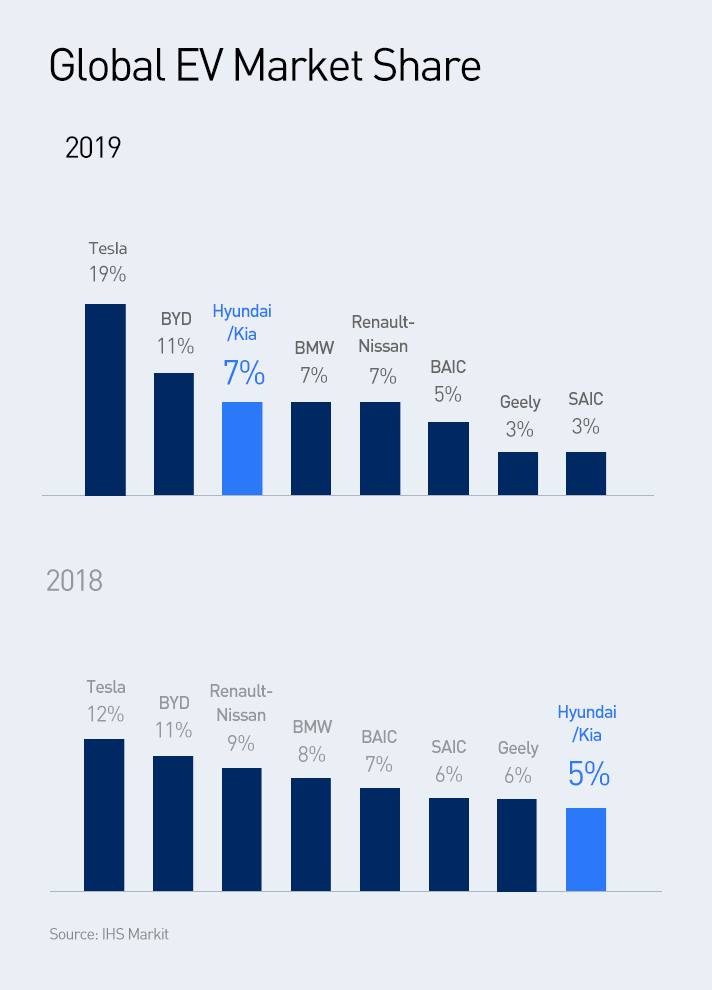
Hyundai and Kia’s global EV market share in 2014 was 0.9%, ranked 15th in the world; in 2018, that figure rose to 5%, helping the maker enter the world top 10; and last November, the figure rose to 7%, which would have Hyundai and Kia rank at third place alongside BMW and Renault-Nissan. Considering that the sales of China’s BYD mostly occurred in mainland China, Hyundai and Kia could be said to have ranked second among the global EV manufacturers.
This rapid rise to the top echelon has no doubt been aided by the brand’s continuous dedication to R&D. Meeting the fast-developing consumer needs by offering a variety of models has often been cited as the reason for the brand’s success in the EV market; however, developing the fundamental technology that created not only the best safety and convenience features but also, more importantly, the longest range among the competitors should be given its due credit. These efforts give us all the more reasons to be excited in seeing what the future evolutions of Hyundai and Kia’s next-generation EVs will be.
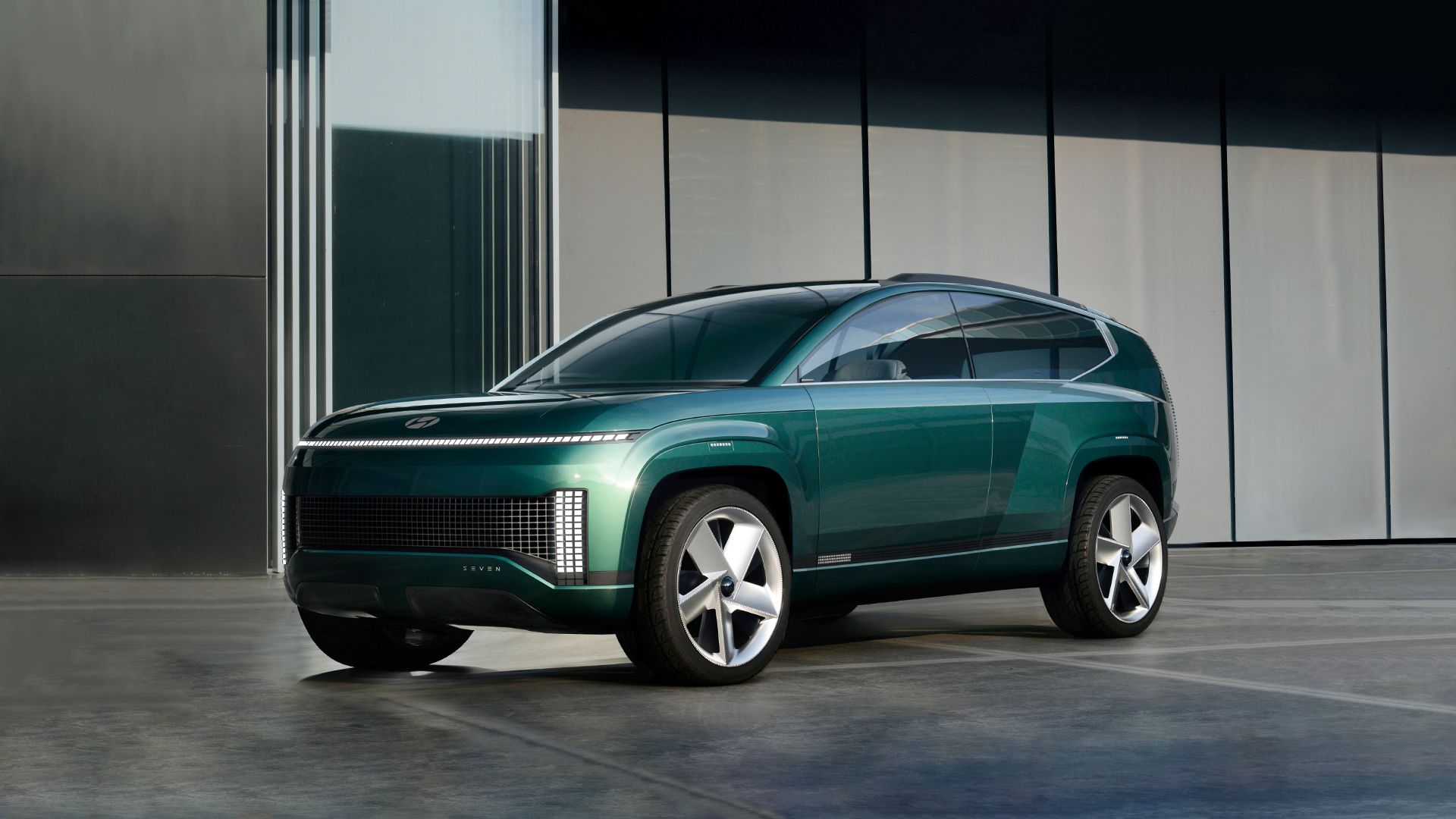
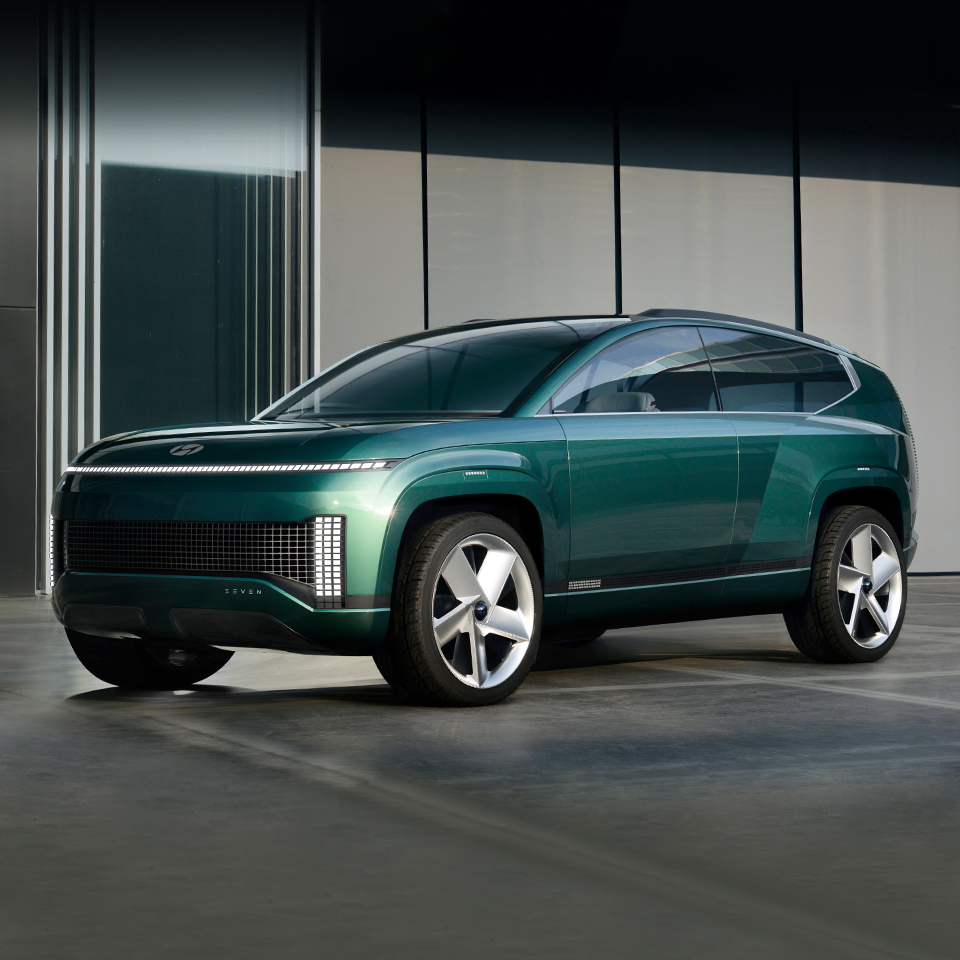
Is It the Era of The Electric Car?
2021.12.28 12min read